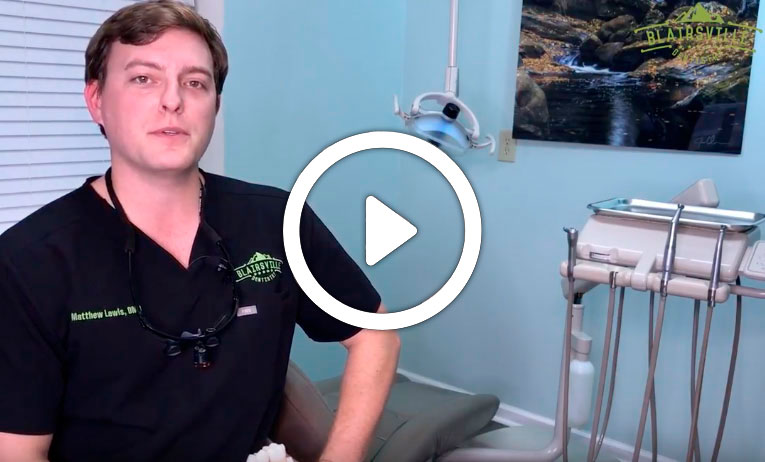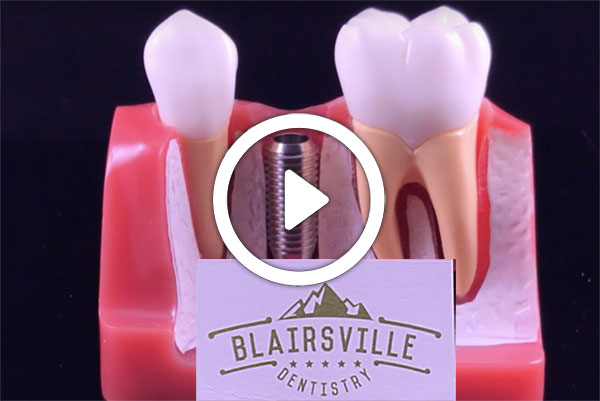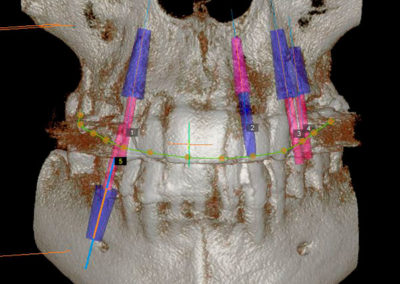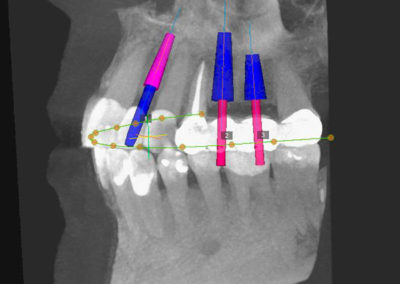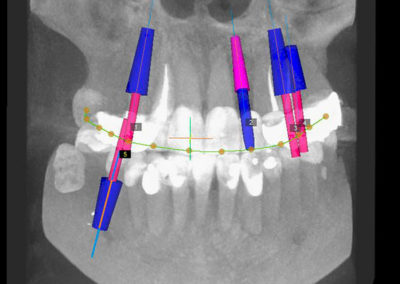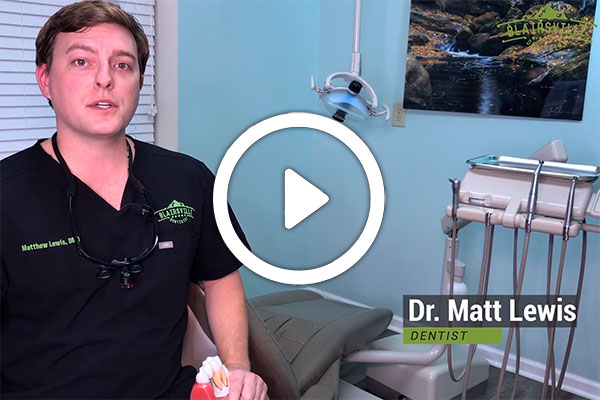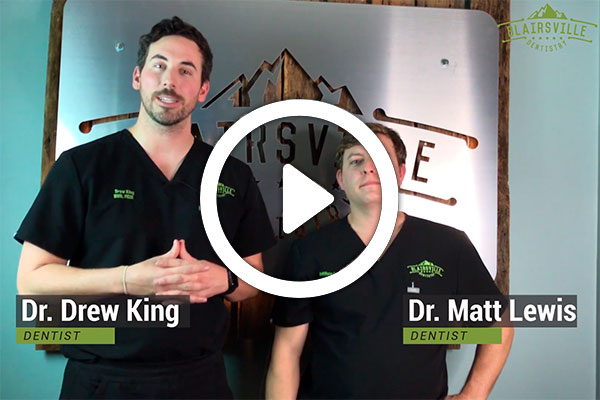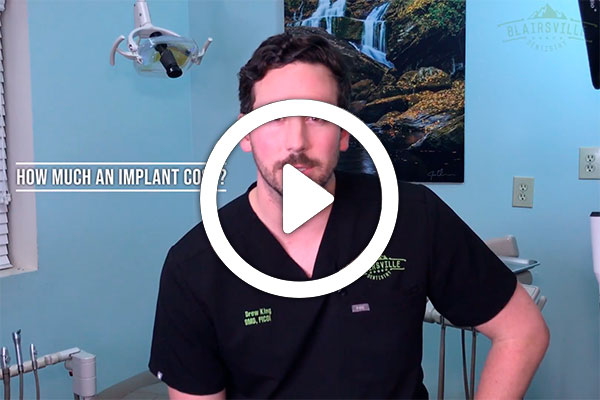Dental Implants
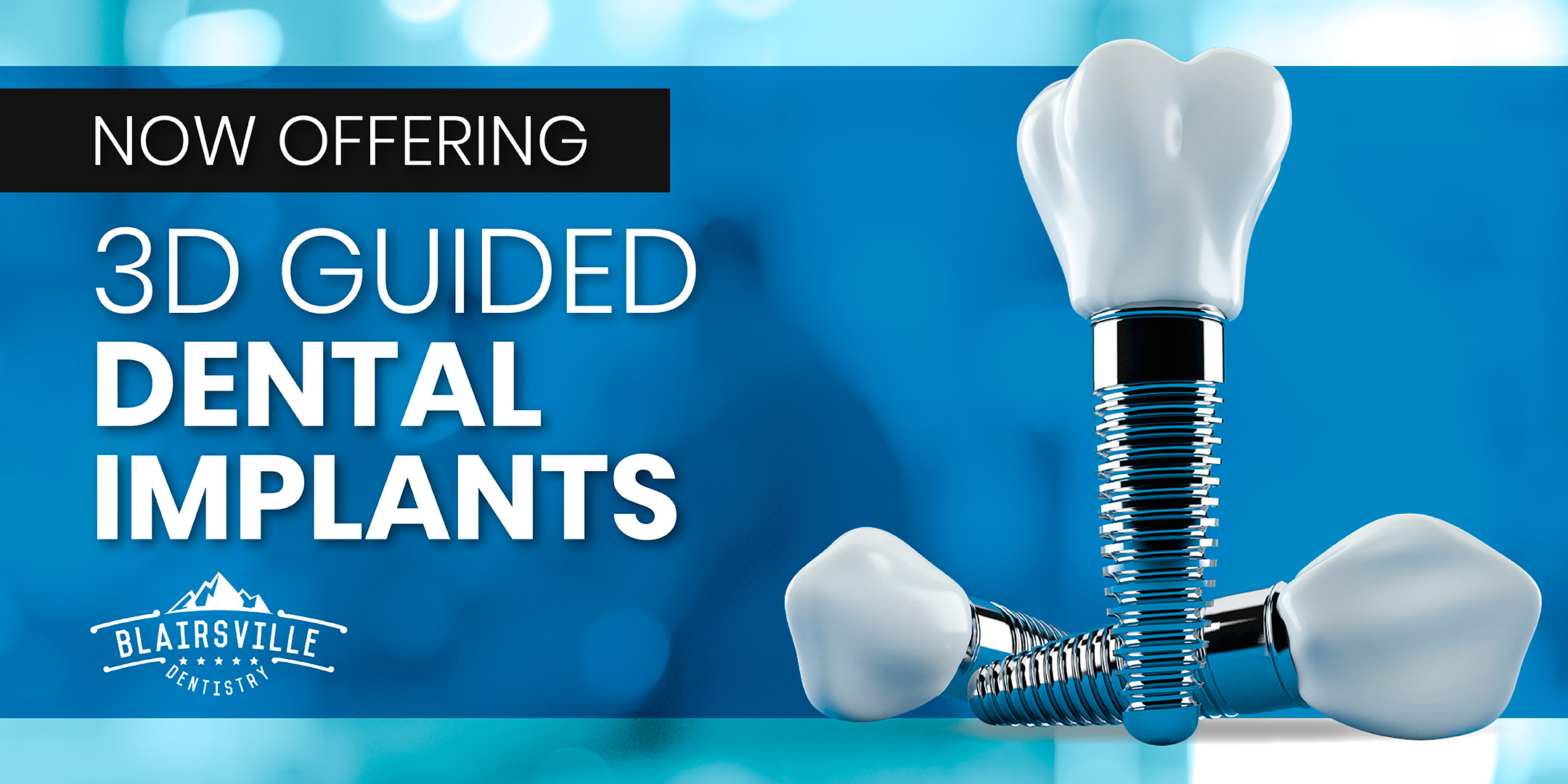
First, What is a dental implant?
Dental Implants: The Gold Standard
Implants now are the gold standard in tooth replacement for a variety of great reasons
A dental implant is a surgical screw that we place in the bone of a patient’s mouth to replace the tooth root. Our implants are made of a surgical titanium alloy because of its strength and compatibility within our bodies. Our bone cells actually grow into the titanium implant over the 3-4 month healing period. This quality of the dental implant allows for the most strong and secure final outcome, whether that is a single tooth replacement, a bridge, or a denture.
Designed to be a long-term fix:
Although bridges have been successfully used in dentistry for hundreds of years, they generally shorten the lifespan of the teeth that support them and often need to be replaced multiple times over the years. Implants
Prevent bone loss and tooth movement:
Without stimulation, our bone atrophies and shrinks away. When a tooth is removed, the bone that used to support that tooth will resorb over time, creating defects or dents, changes in face shape, and
When implants are placed, the forces from chewing are transmitted through the restoration into the bone. These forces stimulate the bone so that it maintains density and volume to support the implant, just as the bone surrounding natural teeth does. Also, our teeth prefer to have partners: if a tooth is removed, the opposing tooth will often grow out of the bone because there is no contact. Teeth will also tip or move forward into areas
Versatility:
The most common image of a dental implant is one supporting a single crown, but they can be used in a variety of indications. Implants placed in multiples are able to support bridges to maximize the number of teeth replaced with a smaller number of implants.
When a patient has lost bone, four or more implants can be placed to support up to a full arch prosthesis that replaces teeth and the bone that used to support them.
Partial and complete denture patients benefit greatly from implants, as snaps can be placed on top of the implants instead of crowns and bridges. These snaps help the denture fasten in place and provide a major improvement in stability, comfort, chewing forces, and phonetics.
A set of complete dentures can only provide about 25% of the chewing forces that a mouth of healthy teeth can. By adding in just two implants at the lower canine positions, the patient improves to about 60% of their previous chewing ability. With every additional implant those forces
Why are they great options for tooth replacement?
No detriment to neighboring teeth:
Traditionally, if missing a tooth, the dentist would make a bridge. To fabricate a bridge, the neighboring tooth on either side of the space needs to be ground down to allow for a 3-unit bridge (3 crowns fused together that rest on the two teeth).
If the surrounding teeth did not need crowns then this process removes a major portion of healthy tooth unnecessarily. Bridges set those teeth up for difficulties in the future, such as need for a root canal, development of cavities in hard to fix areas (you can’t floss between the teeth when fused together), and fracture (we’re asking two teeth to do the work of three, and the supporting teeth have been whittled down).
Can look and function like natural teeth:
Individual implants mimic a natural tooth better than any other option in dentistry. And unlike bridges, partials, or dentures, the strength of implant biting is often stronger than a natural tooth.
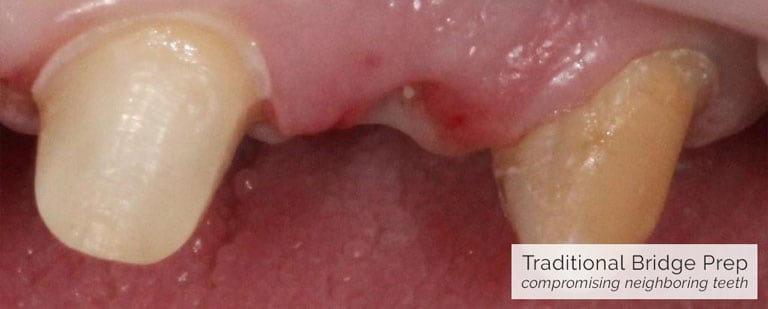
Prep for a traditional bridge –
NOT necessary when doing an Implant
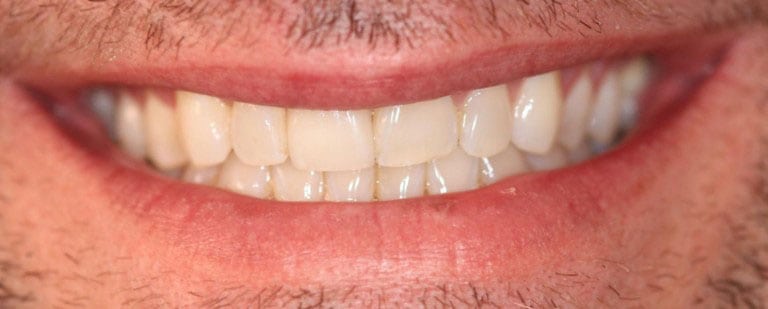
Actual implant patient
Can be changed or updated:
The top portion of the implant can be changed or updated throughout the patient’s life. If an implant was first placed to replace a single missing tooth, it can be swapped out to help support a bridge if nearby teeth are later extracted. If
Step by Step Process:
- Consultation
- CT Scan
- Surgical guide
- Implant placement
- Bone / Graft and PRF option
- Three month of healing
- Crown impression and placement
1. Consultation
At the beginning of your dental implant
A virtual surgery can be done on a computer to plan exactly what size, position, depth, and angulation your implant should be, which helps determine if you require or would benefit from any bone or gum grafting before or during implant placement.
At this
Check this video out to the right that explains an “implant overview”
2. CT Scans- A 3-D xray
The Blairsville Dentistry team is always planning for your safety and comfort, which comes in many forms during the implant process. The 3-D planning process using CT scans is absolutely critical to this goal. You are a three-dimensional human
Proper planning = Predictability
3. 3D guided Surgery
Once we’ve developed a personalized treatment plan for you and decided on the positioning of the implants, we use surgical guides on as many procedures as possible to help ensure that every implant is placed exactly how we want it. These guides are made from the CT scans and are 3-D printed to have a very high accuracy for safety and predictability every time.
Guides can be used for a variety of procedures, ranging from implant
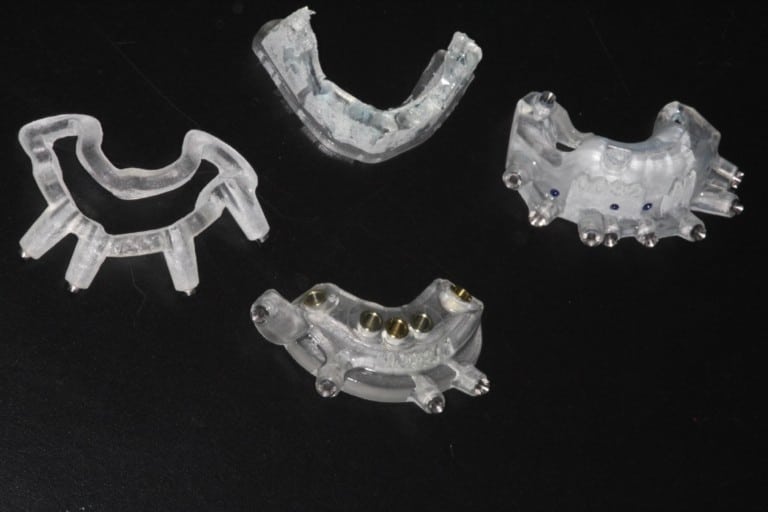
3D printed guides
4. Implant placement
The research over the past 30 years has shown that implants are very predictable and fairly easy on the patient. Sometimes an implant requires even less anesthesia than a simple filling does! This is because there are far
5. PRF For Faster Healing
Platelet Rich Fibrin (PRF) can be incorporated into just about every oral surgery procedure: wisdom teeth, tooth extractions, implants, bone grafts, and sinus lifts.
Using PRF speeds up how quickly the surgical site heals by stimulating the body to accelerate
6. Healing time
Healing time can generally vary from patient to patient. Typically, after the implant is in, it requires about 4 months healing before the final crown can be placed on it. This time is to allow your body to undergo something called osseointegration with the implant (think: allows the implant to become part of your bone). Ones the implant is fully integrated and stable. We can move on to the final restoration (crown).
7. Final crown
Woohoo! This is the best part (and easiest procedure) for you. We simply take an impression and have
Congratulations! With proper care, this implant and crown could last you the rest of your life!
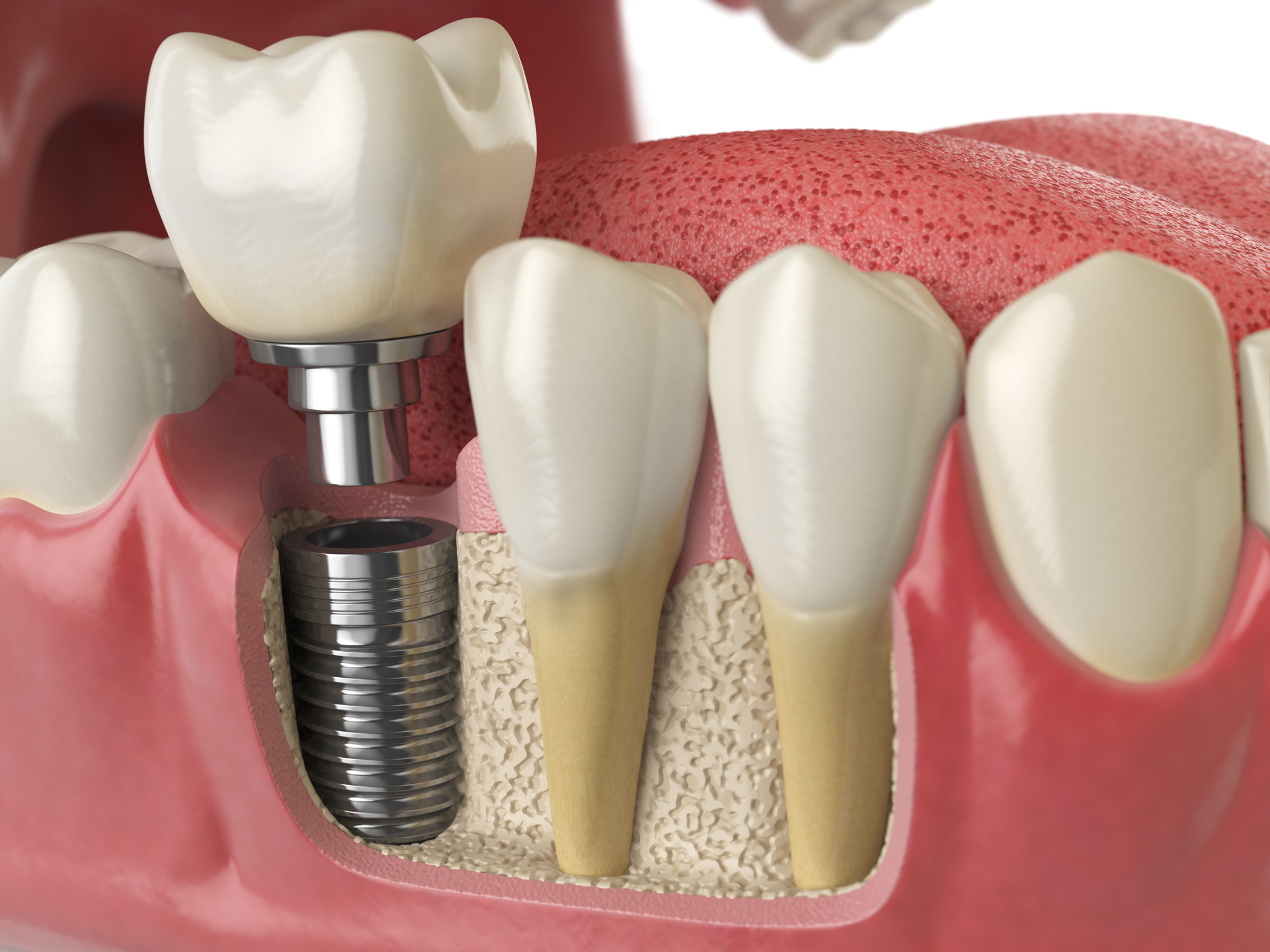
New Services
How much an implant costs?
Blairsville Dentistry (previously Blair House Dental) is located 5 miles north of downtown Blairsville, GA. Serving Blairsville, Young Harris, Blue Ridge, and Murphy, NC.

ADDRESS:
10 Deer Crossing Trce, Blairsville, GA 30512-1496
PHONE:
(706)781-3340

